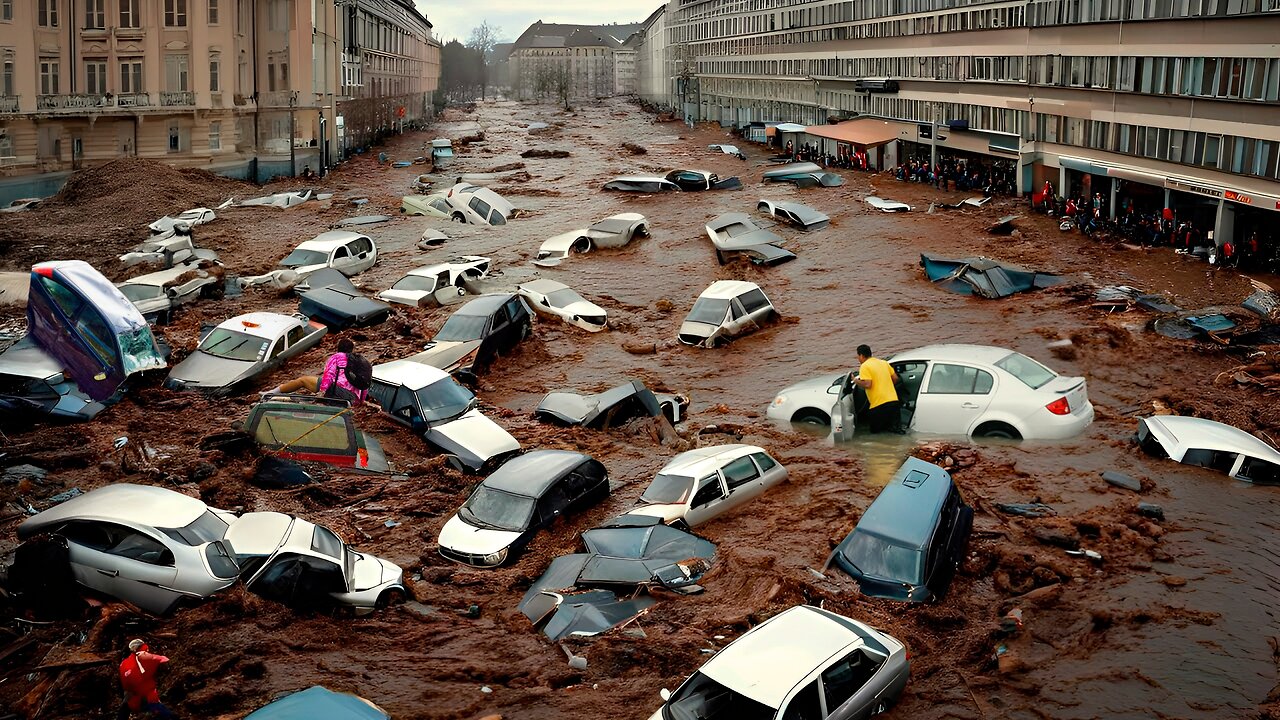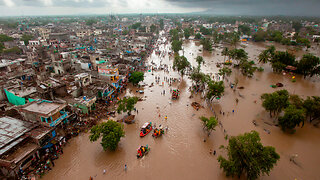Premium Only Content

Chile NOW! Worst Storms in Decades: Flooding, Power Outages and Evacuations
Over several days starting from June 11, heavy rains, strong winds, and thunderstorms battered central and south-central Chile, particularly affecting the regions of O'Higgins, Maule, Ñuble, Biobío, Araucanía, Los Ríos, and Santiago, causing a series of severe weather events. As a result, one person died, three were injured, and over 11,000 people were affected. The fatality occurred in the Maule region, where a man died after a wind-toppled power line pole fell on him.
The most critical situation unfolded in the Biobío region. On the night of Tuesday, June 11, the entire region, home to more than 1.5 million people, was declared a disaster zone. In response to the emergency, authorities in the affected areas requested residents to limit travel.
A few days later in Curanilahue, the Curanilahue and Las Ranas rivers overflowed after about 14 inches of rain fell in just a few hours, surpassing all the rainfall recorded in the region last year. Around 7,000 people were forced to leave their homes and relocate to safer areas.
Early Thursday morning, June 13, heavy rains also hit the country's capital, Santiago, causing flooding, power outages, and transportation issues, as well as forcing schools and universities to suspend classes. In the city of Viña del Mar, 68 miles east of Santiago, an alert was issued about the possible collapse of a 12-story building with 200 apartments in the Reñaca sector. Due to the weekend rains, a sinkhole measuring 50 feet long and 98 feet deep formed under the building.
The natural disaster damaged more than 2,300 homes and left over 60,000 households without electricity. About 1,000 farmers were affected, with losses amounting to around $200 million. According to official data, this is the wettest June in Santiago since 1982. The Chilean Meteorological Service on Wednesday issued a special "climate alert," the highest level of warning for the public due to heavy rains and winds affecting an area covering 14 of the 20 million Chileans, where authorities declared a state of "catastrophe." This level of alert had not been activated for the Chilean capital in the past two decades.
According to the Meteorological Service, the cause of the extreme weather was a cold front accompanied by an "atmospheric river." It received a rating of 4 to 5 on a five-point scale for the amount of available water vapor, which significantly increased the expected rainfall.
As global atmospheric and ocean temperatures rise, such events will occur more frequently and with greater intensity, leading to more severe destruction and loss of life. However, there are already technologies that can significantly slow the escalation of such catastrophes. This would give scientists additional time to find solutions to preserve Earth for future generations.
These unique technologies are discussed in the popular science film "Water From Air: The Path to Saving Humanity": https://youtu.be/0HG7kTGBIfo
-
 3:09
3:09
AllatRa TV
3 days agoMonsoon Chaos: Deadly Floods Strike India and Pakistan
36 -
 3:47
3:47
Blackstone Griddles
13 hours agoCampground Meal Planning on the Blackstone Camping Griddle
2.55K1 -
 28:13
28:13
Her Patriot Voice
13 hours ago $0.63 earnedIs Flag Burning Free Speech?
3.86K10 -
 17:51
17:51
TheRoyaltyAutoService
15 hours ago $0.17 earnedIs Flat Rate Ruining The Auto Repair Industry?!
2.36K4 -
 LIVE
LIVE
BEK TV
23 hours agoTrent Loos in the Morning - 8/28/2025
237 watching -
 LIVE
LIVE
The Bubba Army
22 hours agoMinneapolis Shooter Story Unfolds! - Bubba the Love Sponge® Show | 8/28/25
3,081 watching -
 26:00
26:00
DeVory Darkins
1 day ago $11.62 earnedDemocrat Mayor HUMILIATES himself during painful interview as Trump makes SHOCKING Announcement
35.4K91 -
 22:14
22:14
Ohio State Football and Recruiting at Buckeye Huddle
1 day agoOhio State Football: Everything Steve Sarkisian Said About the Buckeyes This Week
19K -
 1:19:55
1:19:55
TruthStream with Joe and Scott
1 day agoLisa, Michelle and Carole join Joe for Healing and Inspiration. Next healing will be on Aug 28th at Noon and 4pm eastern https://www.balancingbodyandsoul.com/?ref=TRUTHSTREAMSHOW
12.1K1 -
 10:32
10:32
Nikko Ortiz
17 hours agoFunniest Fails Of The Month
36.9K4